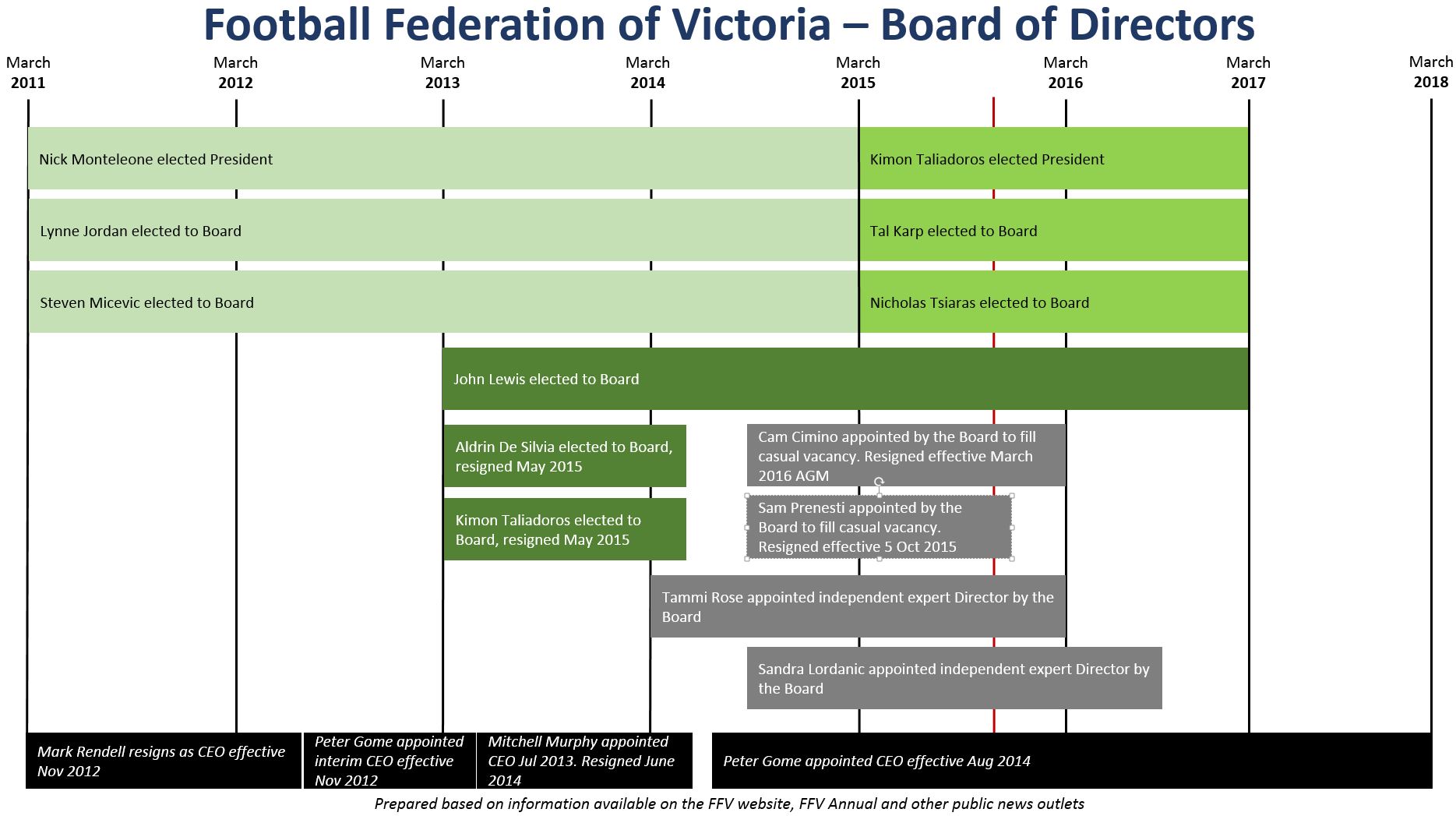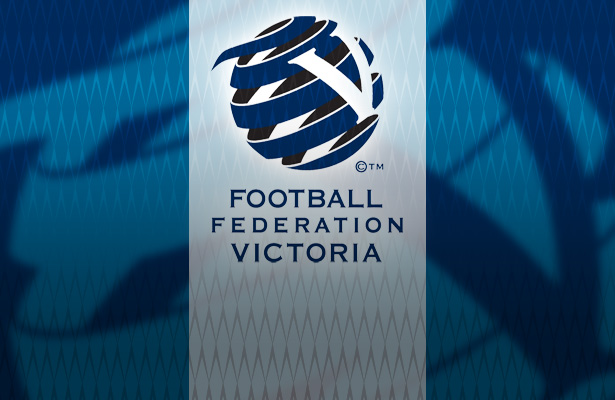It’s a Monday evening, four days before Christmas, and NPL pre-season friendlies are being played at two locations across Melbourne. However, on Level 3, 486 St Kilda Road, a Special General Meeting is being held to consider the future composition of the Football Federation of Victoria Board.
The meeting was demanded by the voting members of the FFV, resisted by the Board, has been suspect to QC legal advice, and even FFA CEO David Gallop has been involved. So what is it all about? To understand the context, it is necessary to look back in history a few years to through a somewhat tumultuous time for the Football Federation of Victoria.
The relationship between the Federation and the clubs in Victoria started to come to a head with the proposed introduction of the National Premier Leagues. Structural change has always been political in football. Anyone who has read A History of Australian Football by Roy Hay and Bill Murray will know all too well about the often decade long fights that existed for control of the game in this country. Victoria was not immune from his saga, and often it was neck deep in it. So it was not surprising to see the introduction of the NPL bring together a variety of views. In the age old tradition of football, it was the clubs vs. the association.
The NPL introduction hit the courts, delayed the start of the competition, and elevated the tension among those in control of Victorian football. As Helen Velissaris of Hellic newspaper Neos Kosmos reported at the time, “the FFV and representatives of 59 co-signatory clubs opposed to the FFV’s NPL program appeared in the Magistrates Court in the hopes of finding a mutual solution“. Whilst the NPL situation would be resolved, the saga at Board level continued.
The Federation Board had been stable under the leadership of Nick Monteleone, and the Annual General Meeting some six months earlier in March 2013 saw three new Directors elected: John Lewis, Aldrin De Zilva and Kimon Taliadoros (now FFV President). It was this Board which oversaw the appointment of Mitchel Murphy as CEO of the Federation and the preparation of the NPL. However, a year later, with the NPL on the brink of kicking-off, three unexpected changes would see the start of the journey to the Federation’s current position.
In May 2014, there were two resignations from the Board. Kimon Taliadoros and Aldrin De Zilva resigned effective immediately. There was no public explanation or justification for their resignation. De Zilva was reported to have been at loggerheads with Monteleone and the Board for a number of months in relation to financial statements that had been released by the FFV, which had allegedly not been sighted by or endorsed by the Board. Compounding this was De Zilva’s charge with misconduct by the FFV as a result of an incident at an NPL Under 13s match, found guilty two months later and receiving a two-year ban from any FFV-sanctioned football match by the tribunal.
Irrespective of the final reason for De Zilva and Taliadoros resigning from the Board, it meant a reduction in numbers at the strategic level of six to four. At the recent AGM in March however, the Board executed its discretion to appoint an independent Director, and this is when Tammi Rose came on board. So the board comprised of four elected members, two vacancies, and one appointed independent director.
The vacancies of De Zilva and Taliadoros remained unfilled for some six months until November 2015. The Board was required to fill these vacancies and had advertised for, and identified, their candidates. There was alleged discontent among the clubs at the time in relation to the FFV Constitution, which gave the Board discretion to make the appointments without a need for an election. Most important was the plan by the Board to fill the positions by appointment rather than wait until the AGM in March 2015. The roles had been vacant for six months – would another four months have made that much of a difference?
The FFA had a similar view to the clubs that it would be appropriate to wait until the AGM to fill the positions and to do so by election. This view was confirmed by FFA CEO David Gallop in a recent letter publicly released by the FFV. It was therefore a surprise to the clubs and to many others that the FFV Board proceeded to make the appointments to fill the vacancies. George Stogiannou at Neos Kosmos reported that President Nick Monteleone responded to Gallop in writing, saying, “With regards to the casual vacancies, the FFV board have sought and received independent legal advice on the matter and have resolved the following: That the current director vacancies be filled by board appointment, in accordance with the FFV Constitution and following a publicly advertised and transparent interviewing and selection process”. These appointments were Sam Prenesti and Cam Cimino. Additionally, the Board used its discretion to appoint a further Director, Sandra Lordanic, as a second independent Director.
As of November 2014, the Board comprised of four elected Directors, two appointed Directors to fill elected vacancies, and two independent Directors. Had the Board done anything wrong in its actions to appoint these Directors and not wait for an election? Legally, no. The Board acted in accordance with the provisions of the FFV Constitution and performed their due diligence as Directors. What is less clear is whether the Board acted in the best interests of FFV and its members by undertaking an act which, depending on one’s perspective, removed the ability for the members to elect their own Board representatives.
Carry forward another four months to the March 2015 AGM, and there were to be three mandatory changes at Board level. Nick Monteleone had led the Board and Federation for a four year term, as had Directors Lynne Jordan and Steven Micevic. Elections were held with Kimon Taliadoros returning to the Board, albeit in the position as President this time, together with Directors Tal Karp and Nicholas Tsiaras.

The key point for many at this time however, is that the general composition of the Board did not change. There were four elected Directors, two appointed Directors to fill elected vacancies, and two independent Directors. The appointed Directors serve for a four-year term and as such, there was the potential that the composition of the Board could remain as such until March 2017.
It is now nine months since the March 2015 AGM, and we find ourselves seeing a Special General Meeting being convened. The demand for the Special General Meeting came about through the FFV members. There are 29 elected voting Members (being 24 Zone representatives and 5 chairs of the standing committees) who vote for the FFV board.
In football politics, you rarely generate broad ranging consensus and a large majority – there are just too many competing priorities, personalities and perspectives. It is therefore significant that the demand for the Special General Meeting has come as “23 of the member representatives have signed a requisition notice for the directors to be removed,” as reported in Neos Kosmos.
Appointed Director, Sam Prenesti, resigned from the Board effective back in October, and the FFV states the other appointed Director fulfilling a vacant elected position, Cam Cimino, has also tendered his resignation from the Board effective March 2016, the date of the next AGM.
Just days before the Special General Meeting, the FFV made its first public statement in response to the call for the meeting and for the directors to be removed. Published on the FFV website is a detailed statement including support from legal advice and FFA CEO David Gallop. The position is that the Board’s composition is legally valid, there is no capability for the voting members to call for a Special General Meeting, and there are no provisions under the Constitution for the members to remove a director. It is these last points that prove most poignant about the whole saga. The FFV Constitution places all power and authority in the Board of Directors, with no capability for the voting members to remove the Board.
As an olive branch to its voting members, the Board resolved to:
- Conduct an open and transparent process designed to support the Member’s consistent requests that all elected Board Directors positions are filled by Directors that have been elected by the Members;
- For this process to be completed prior to the 2015 AGM scheduled for 21 March 2016; and
- Not to appoint any other Directors into the Casual Vacancy Board positions in the interim.
Additionally, the Board to commission ‘a detailed and wide-ranging review of the FFV Constitution’ to be completed by the end of June 2016.
It is encouraging to see the efforts of the members has resulted in the Board standing up and taking note, but as usual, actions speak louder than words. The Special General Meeting last night was in no way recognised by the FFV Board, however was chaired by its President Kimon Taliadoros. Given the power and control weilded by the Board, the best the powerless members could potentially achieve is a vote of no-confidence in either the Board as a whole, or certain Directors. It may not bring about immediate change, but it will certainly put the issue in the public domain.

